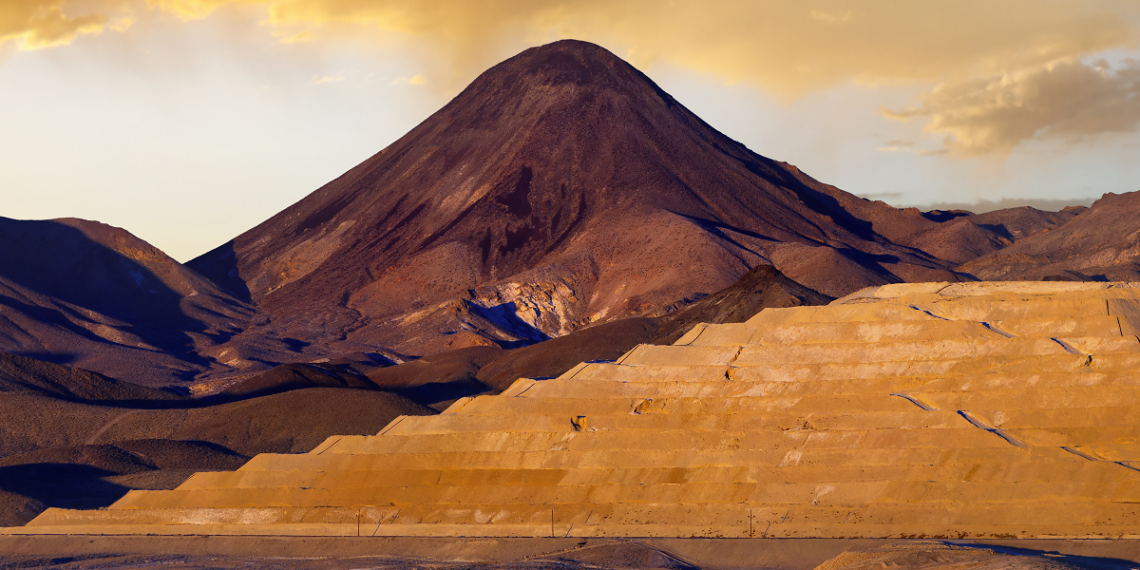The team behind the giant Nevada Gold Mines operation in the US is making strong progress with plans to significantly extend the project’s mine life.
Claimed to be the single largest gold-producing complex in the world, the Nevada Gold Mines includes mining operations at Carlin, Phoenix, Twin Creeks, Lone Tree, and Long Canyon. Nevada Gold Mines, a joint venture between Barrick (61.5%) and Newmont Goldcorp (38.5%), comprises 10 underground and 12 open-pit mines, two autoclave facilities, two roasting facilities, four oxide mills and five heap leach facilities.
Three years after the formation of the joint venture that created the world’s largest gold mining complex, Nevada Gold Mines (NGM) is accelerating its next growth phase by identifying new opportunities for discoveries and additions.
During a recent visit to NGM by Barrick’s board of directors, the company’s president and chief Executive, Mark Bristow, said NGM stood out from the rest of the industry not only for its size but because a wealth of projects and prospects secure its future as a high-quality, long-life operation for decades to come.
He said that over the past three years, NGM has worked relentlessly to unlock synergies by consolidating mines, teams, processing facilities, and landholdings. In its short life, NGM has produced 10Moz of gold and substantial free cash flow (on a 100% basis). Greatly improved knowledge of the orebodies has supported robust 10-year plans and has increased the pre-merger life of mine substantially.
“At the existing operations, brownfields exploration is replacing reserves depleted by mining and identifying new targets while the greenfields team is hunting further afield for a new Tier One discovery,” Mr Bristow said.
“NGM’s future flagship development will be the Goldrush project adjacent to Cortez, which is subject to an environmental review by the Bureau of Land Management and other cooperating agencies, including public comment and input. It is a world-class underground deposit with a life of mine plan more than 20 years and is expected to employ 500 people during construction and 570 during operation.”
Mr Bristow said NGM and Barrick have positioned themselves as a key partner to the state of Nevada with NGM’s workforce of 7,000 making it one of the state’s largest employers. When the COVID-19 pandemic struck in 2020, NGM offered to prepay net proceeds from mineral tax and, more recently, it has worked with the state to create the mining excise tax, with the funds earmarked for education starting in 2023. To date, NGM has paid close to US$60M towards this new excise tax.
“NGM continues to invest in people, both current and future employees, through education partnerships and training programmes. It supports the College of Southern Nevada and the Clark County School District where high school students can obtain certificates in industrial maintenance or diesel technology and has renewed its partnership with Discovery Education for the Nevada Department of Education’s outreach programme. The company is also working with the University of Nevada and the Great Basin College in Elko to develop mining-centred programmes.
“Internally, NGM has been developing a unique talent development program called ‘training mines’ for underground and surface mining as well as process operations with the aim of providing the company with well-rounded, safety-focused employees and maintaining quality control through structured, comprehensive, competency-based training. In addition to the training mines, leadership development programs have been rolled out with a focus on safety.”
“We are also continuing our investment in community infrastructure, including the Elko broadband initiative which has delivered high-speed internet access to more than 635 homes. We have also established day care facilities in Elko County to enable more women to join our workforce,” he said.
Barrick recently reported that the completion of pre-feasibility studies for the Robertson open pit project at Cortez, as well as a new pushback in the Hemlo open pit have been significant contributors to NGM’s recent reserve growth. As a result, Robertson’s maiden attributable proven and probable gold reserves are estimated at 1.0Moz at 0.46g/t.
Barrick says this represents a milestone for Cortez as a key source of oxide mill feed in the mine plan. Similarly, the new Hemlo open pit pushback is expected to commence in 2027 adding 0.86Moz of gold at 1.49g/t to probable reserves.
The total proven and probable gold reserves for the Nevada Gold Mine complex is 29.8Moz.
The total proven and probable mineral reserves for the Carlin complex are estimated to be 190Mt grading at 3.32g/t Au, containing 21Moz on a 100% basis as of December 2019.
At Phoenix, proven reserves were estimated at 9.4Mt grading 0.66 g/t representing 0.20Moz of gold and 94Mt grading 0.59 g/t representing 1.8Moz of gold as of December 2019.
Nevada’s gold discovery
Today, Nevada is clearly the USA’s leading gold producing region. It’s golden history traces back to July 1849, when Abner Blackburn, a former member of the Mormon Battalion, made the first gold discovery.
William Prouse, a member of a passing emigrant party, made a second discovery further up Gold Canyon in May 1850. The discoverers of these placer gold deposits believed the promised riches of California to be greater. Most emigrants consequently continued their westward journeys, but a few returned after finding most of California’s Motherlode creeks and rivers already claimed.
By the spring of 1851, some 200 placer miners, including James “Old Virginny” Finney, were working in the area. The continuous occupation of Gold Canyon’s mouth makes this site Nevada’s first non-Native American settlement. Dayton, also known as Chinatown, became a mineral milling, commercial, and agricultural centre after prospectors and placer miners worked their way up Gold Creek. This monument commemorates the 150th anniversary of the discovery of gold and the thousands of pioneers who passed near this site.
New discoveries
While Nevada has a long and colourful gold mining history, new discoveries continue to be made.
Sierra Nevada Gold (ASX: SNX) recently obtained “encouraging” assay results from its recent drilling at the Colorback gold project in central Nevada.
The company completed five reverse circulation (RC) holes for 378m at Colorback and results confirmed the presence of near-surface gold mineralization, verifying historic drilling that outlined zones of near surface oxidized gold mineralization.
Colorback’s historically defined zones of near-surface oxide gold mineralization coincides with the interpreted intersection of the Cortez and Pipeline structural corridors.
Executive Chairman Peter Moore said the company is very encouraged that the intersection of these key structural trends coincides with significant gold enrichment within the Upper Plate rocks.
“This relationship demonstrates the potential for these structures to either host or control the emplacement of Carlin style mineralization at depth within more receptive Lower Plate host rocks, as is the case at the nearby Cortez Complex and Pipeline deposits.”
Colorback is located in the Battle Mountain Trend (BMT), which among others hosts the nearby giants, Pipeline deposit (20Moz gold), the Cortez Complex (15Moz gold) and Barrick’s Goldrush and Fourmile discoveries (+15Moz gold and growing). Located to the south of the Colorback project, the Robertson gold deposit was acquired by Barrick in 2017 for US$15.75M plus 1-2.25% NSR. Robertson is expected to produce at least 250,000ozpa gold over a 10+ year mine life.











